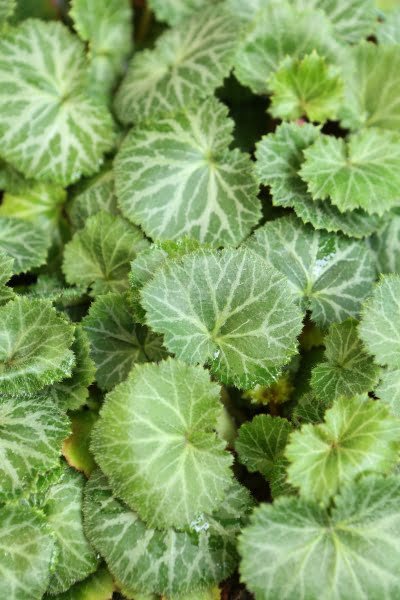Strawberry begonias, scientifically known as Saxifraga stolonifera, are a captivating species native to Asia. These herbaceous perennials are characterized by their long, thin runners that terminate in clusters of rounded leaves. When cultivated indoors, they make for a striking display, with their distinctive hairy, red-hued leaves cascading over sills and edges. In this comprehensive guide, we will explore how to grow and care for strawberry begonias, ensuring they thrive in your indoor environment.
Check out Janet Craig Plant: Your Ultimate Guide to Care & Growth 2023 Click here...
Botanical Insight
Botanical Name: Saxifraga stolonifera
Common Names: Strawberry begonia, creeping saxifrage, strawberry geranium
Type of Plant: It’s a plant that lives for a long time and doesn’t have a woody stem.
Size When Grown: It can be 6 to 18 inches tall and 12 to 24 inches wide.
Sunlight Needs: It likes to be in the sun, but some shade is also okay.
Soil Type: It needs soil that’s moist but also lets water drain away.
Soil pH: It likes soil that’s not too sour or too sweet.
Flowering Time: It makes white flowers in late spring and early summer.
Color of Flowers: The flowers are white.
Places It Can Grow: It can grow in parts of the United States called USDA zones 6 to 9.
Where It’s From: It comes from Asia.

Strawberry Begonia Care Tips
Strawberry begonias are a delight to grow and care for, making them an excellent choice for both novice and experienced houseplant enthusiasts. Here are the key considerations to ensure your strawberry begonias flourish:
Light
Strawberry begonias thrive in bright, indirect sunlight. Ideally, place them near an east- or west-facing window to provide the perfect lighting conditions. However, avoid direct sunlight, which can lead to sunburn and leaf damage.
Soil
Select lightweight, well-draining potting soil for your strawberry begonias. The soil should remain consistently moist but not waterlogged to prevent root rot. Good soil drainage helps keep the right amount of moisture for your plants.
Water
These plants are known for their fast growth and, as such, require regular watering during their active growing season. However, be mindful not to wet the leaves, as moisture on the foliage can invite fungal diseases. Water your plant once the top two to three inches of soil have dried out, ensuring thorough saturation.
During the winter, reduce your watering frequency, but never let the soil dry out completely.
Temperature and Humidity
Strawberry begonias prefer cooler temperatures ranging from 50 to 75 degrees Fahrenheit. These plants don’t do well in hot places, so it’s important to move them to a cooler area if needed. Regarding humidity, strawberry begonias can adapt to a range of humidity levels typically found in homes.
Fertilizer
To encourage healthy growth and blooming, feed your strawberry begonias with a weak liquid fertilizer that contains micronutrients during the growing season. Controlled-release fertilizer pellets are also a suitable option to support their nutritional needs.
Check out Peperomia Caperata Care: Your Comprehensive Guide Click here...
Strawberry Begonia Varieties
The strawberry begonia, Saxifraga stolonifera, is the most common variety. There’s also the Tricolor variety, which boasts slightly smaller leaves with a creamy halo around the leaf margins.Even though they look like begonias, it’s important to know that they are not real begonias. ‘Tricolor’ varieties require extra attention to watering and temperature control due to their more delicate nature.
Propagating Strawberry Begonias
Strawberry begonias are incredibly easy to propagate through their offsets. To do so, gently push the plantlets or offsets into the soil, either in the same pot as the mother plant or in a nearby small pot while keeping them attached to the main plant. Within a few weeks, the plantlets will develop their own roots. Once they have their roots established, snip the runner connecting them to the mother plant, and you’ll have a clone ready to flourish independently.
Check out Best companion plants for celery – Guide Click here...
Potting and Repotting Strawberry Begonias
Strawberry begonias are rapid growers and will quickly outgrow their original containers. To keep up with their growth, it’s essential to repot your plant into a larger container every spring. Over time, you may notice the mother plant becoming sparse in the center or developing woody stems. In such cases, simply propagate the mother plant from its plantlets and replace it with the fresh offspring.
Common Pests and Diseases
As with many succulent plants, strawberry begonias are susceptible to mealybugs and aphids. Detecting the signs of infestation early is crucial. If you notice any issues, promptly remove the affected foliage and treat the plant with an appropriate insecticide.
In conclusion, growing and caring for strawberry begonias can be a rewarding experience. These charming plants, with their unique leaves and ability to thrive indoors, make an excellent addition to your indoor garden. By following the guidelines outlined in this comprehensive guide, you can ensure your strawberry begonias not only survive but flourish in your home.
Pingback: Elatior Begonia: Care Tips and Growing Techniques
Pingback: 10 Easy Indoor Blooming Plants for Winter Color -
Pingback: 12 Gorgeous Varieties of Calibrachoa (Million Bells) -
Pingback: 16 Trees That Start with S -
Pingback: Complete Guide to Growing Dragon Fruit Plants at Home - Gardener's School